TRAVEL INFORMATION INDIA
About India Travel
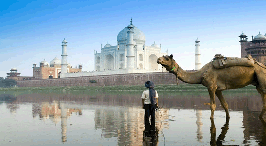
India is a land of cheerful colours. From the profounded blue seas and bountiful green flora, to the endless yellow deserts and austere brown earth, the multitude of colours mesmerize a visitor. The various shades of colours can be felt not solely with the ambiance, but within the culture, customs, traditions, festivals, attires and cuisines of the Indians too.
There is alot to view in India, so much to understand, and a lot to experience. This land of sun worshippers and snake charmers, offers an experience unimaginable and unbelievable.
One can simply take a tour of the Golden Triangle (Delhi, Agra, Jaipur) and visit the spectacular Taj Mahal, the epitome of love of a Mughal emperor. This architectural marvel is one in every of the Seven Wonders of the world. Made out of white marble, Taj Mahal is a fascinating work of art.
The next destination of the Golden Triangle tour is Jaipur that lies within the state of Rajasthan. This land of Kings is known for its several forts and palaces. With India's oldest mountain range as the backdrop, Rajasthan is where exactly the heritage, tradition and royal glory meet up. It is a land rich loaded with music, dance, art & craft, adventure safaris, and wildlife.
Contrasting to the sizzling hot Rajasthan, there’s Kerala at the south of India. The natural surroundings there offer a spectacular view. Circled by the backwaters, amidst the coconut groves, a stay at the houseboats of Kerala, leaving a desirable experience to travellers. Moreover, Kerala is also an ideal destination for health care, ayurveda, yoga and meditation.
History
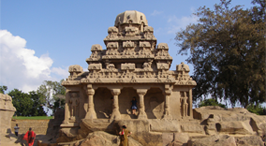
India is known to have a history as the time passes on. For the pre historic era, the earliest known civilization is Indus valley which has been ruled by priests and held the fundamentals of Hinduism. This civilization that survived for nearly a 1,000 years is best known for its amazing town planning.
The Indus Valley civilization crumpled with the evolution of the Indo-European group around 1500 BC. This age is also called as the Vedic age in India. Then came the days of Gautam Buddh, the founder of the Buddhist community, Mahavira who founded the Jain faith, and eventually, Emperor Ashoka of the Maurya dynasty who is known to be as one of the greatest kings in the Indian history.
After the Mauryas, the Gupta dynasty ruled North India. The Cholas, the Pandyas and also the Cheras were the dynasties ruling South India. In the 7th century AD, a group of Zoroastrians, or Parsees, landed in Gujarat and then became a part of India. In the 15th Century, Guru Nanak laid the foundation of the Sikh community. During the year 1192, Islam got introduced into a significant part of northern India, when Mahammed of Ghor, a ruler from Afghanistan, captured many parts of North India along with Delhi. On returning home, he left one of his general incharge, who became the first sultan of Delhi. However, the Delhi Sultanate was over once Timur came from Turkey in 1398 and attacked India.
The Mughals then ruled for a very long time, untill the early 18th century at the decline of their empire. The Europeans - Portuguese, French, Dutch, Danish and British started overpowering the few parts of India, however it had been mainly the britishers who controlled major part of India.
The first war of independence was fought in 1857 and then India finally got independent in 1947. Mahatma Gandhi, led the war, and is known as the ‘Father of the Nation’at this point of time.
Culture
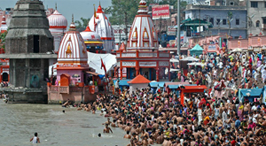
The Indian Culture is exclusive and diverse. It is the lifestyle of the Indians. The culture of India is represented fantastically with its dances, art and craft, architecture, religions, literature, cinema, music, customs and traditions.
Dance is basically an expression of happiness, bliss, delight. In India, folk dances are performed to celebrate an occasion. Whether it’s a festival, a marriage, the birth of a child, the arrival of season, Indians have a dance type for each kind of celebration. Each dance type has its own specific costume, typically accompanied by extensive jewellery. Some of the dance forms are Dandia, Bhangra, Chhau, Kathak, Manipuri, Odissi, Kathakalli, MohiniAttam, Kuchipudi amongst various others.
Art in the form of Architecture, paintings and handicrafts is found in India from each & every era. There are fantastically engraved temples in South India, since the time of the Cholas. There are almost twenty locations in India with paintings and traces of former paintings. Bagh Caves (Madhya Pradesh), Ellora Caves (Maharashtra) and Sittanavasal (Tamil Nadu) are few examples. Whereas on the other side, monuments in Delhi and nearby areas are suggestive of the Mughal architecture.
Indian classical music is one amongst the oldest endless musical traditions of the world. Having brought back from the Vedas, presently music in India is an intermingling of several cultures and races. Sitar, Sarod, Veena, Harmonium, Bansuri etc are various musical instruments generally played in India.
Fair & Festivals
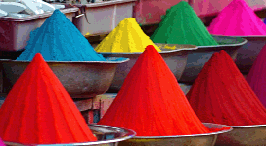
Each & every colours of India can be primarily felt through its fairs and festivals. whereas vim and vigor are basically common to all of them, each of them has a specifically fantastic flavor to that. To list a few in all months, the year starts with the celebrations of Float festival in Tamil Nadu, Lohri in Punjab, and Makar Sankranti in various parts of India. India celebrates its Republic Day on 26th of January. Feb brings Eid, Goa carnival, Suraj Kund crafts mela, and Taj Mahaotsav. With March comes the bright colours of Holi, which is well played in most of the states of India.
April hosts a variety of festivals like Baisakhi in Punjab, Bihu in Assam, Good Friday & Easter, Mahavir Jayanthi , Ramnavami, Budh Purnima, and Vishu in Kerala. whereas there are only some festivals which comes in the summer months of May, June, and July, there are few that comes in August like Id-ul-Fittr, Indepedence day, Janmashtami, Nehru Trophy Boat Race and Onam in Kerala, Raksha Bandhan in North India, and Teej in Chandigarh & Rajasthan. The last four months includes Ganesh Chaturthi, Dusshera, Diwali, Navratri, the Pushkar fair, and Christmas, amongst a lot of other fairs and festivals.
Famous for its unique flavor of herbs and spices, the Indian cuisine boasts of Arab, Turkish and European influences. The way of cooking varies from region to region and there is a lot of variety of dishes in each one of them.
Wheat, rice, and pulses actually makes the staple diet of the Indians. The food is rich in curries and spices. The key ingredients of most of the dishes like turmeric, , coriander, ginger, dried hot peppers, cardamom, and cinnamon, amongst others. The curries are balanced by an assortment of breads that consists of roti, bhatura, naan, puri etc. The food is most oftenly eaten with fingers.
Clothes
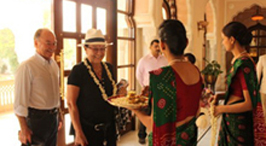
Depending on the ethnicity, geography, climate and cultural traditions, attires of the individuals vary from region to region.
However, the most traditional attire for ladies is tha Saree, which is a 4 to 9 yard long unstitched garment and that can be draped in several styles. The other dresses for ladies include the lehnga-choli, salwar-kameez etc. The ethnic dresses for men include the Dhoti-kurta, sherwani, Kurta-Pyjama, Lungi-shirt etc.
Morever the colour, texture and material is diversified for instance, the colour white is worn by Hindus for mourning, while Christians wear white on weddings!
Wildlife
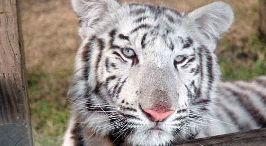
Indian Wild life is actually a mixture of variety of species. The foremost farm animals found in India are cows, buffaloes, poultry, goats, and sheep. Native to the country is an amazingly wide range of animals which consists of tigers, pythons, wolves, crocodiles, Leopards, lions, foxes, bears, rhinoceroses, camels, wild dogs, snakes, antelope species, monkeys, deer species, varieties of bison and even the mighty Asian elephant.
There are 89 national parks, 18 Bio reserves and more than 400 wildlife sanctuaries all over across India. India hosts 3 of the world’s 34 biodiversity hotspots which are the Western Ghats, Indo- Burma and the Eastern himalayas.
Adventure
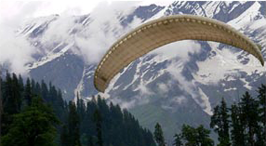
India has massive choices available for those who are looking for an adventure,. From scuba diving and ice skating to river rafting and yachting, kayaking to horse riding, trekking to mountaineering, India has all of them.
The Himalayan region, the state of Rajasthan & Himachal Pradesh, and the lovely beaches of Goa are just some of the options that an adventure seeker has for that awesome adrenaline rush!


